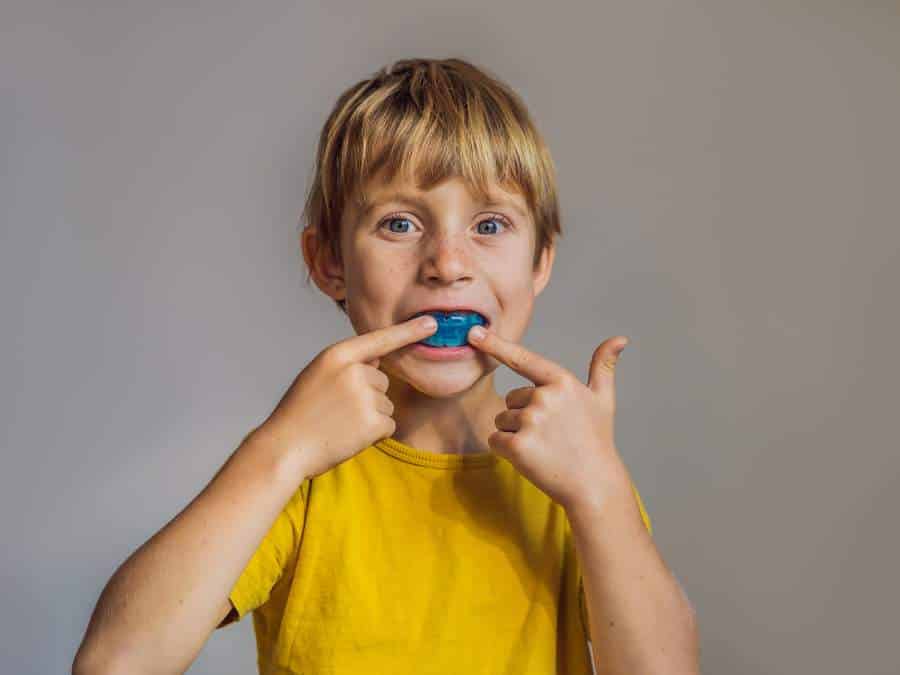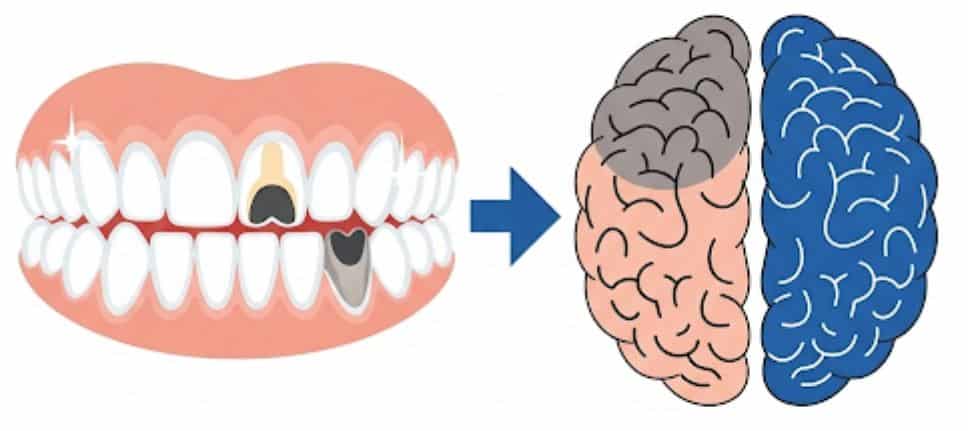
By Dr. Jung, Central Park Dental
As a holistic dentist with years of experience treating children, I’ve observed firsthand how mouth breathing can impact a child’s development and overall health. While it might seem like a minor issue, mouth breathing can lead to significant dental and developmental concerns if left unaddressed. In this comprehensive guide, I’ll share essential information every parent should know about mouth breathing in children.
Understanding Mouth Breathing: More Than Just a Habit
When a child consistently breathes through their mouth instead of their nose, we’re looking at more than just a quirky habit. Nasal breathing is nature’s design – it filters, warms, and humidifies air before it enters the lungs. It also facilitates proper oxygen exchange and supports healthy development of facial structures.
Mouth breathing, on the other hand, bypasses these natural mechanisms. The air enters directly, unfiltered and unwarmed, potentially leading to a cascade of health issues that extend far beyond the oral cavity.
At Central Park Dental, we take a holistic approach to identifying and addressing mouth breathing. We understand that oral health is intricately connected to overall wellness, which is why proper breathing patterns are a crucial component of our preventative care philosophy.
The Top 7 Things Parents Should Know About Kid’s Mouth Breathing
1. Mouth Breathing Can Significantly Alter Facial Development
Perhaps one of the most profound impacts of chronic mouth breathing is how it shapes a child’s developing face. When children consistently breathe through their mouth, their facial muscles adapt to this pattern, often resulting in what we call “adenoid facies” or “long face syndrome.”
These children typically develop:
- A narrower facial structure
- A smaller, less developed jaw
- A more recessed chin
- Less defined cheekbones
- A narrower palate (roof of the mouth)
At Central Park Dental, Dr. Jung uses specialized assessment techniques to identify these developmental patterns early. By addressing mouth breathing in the formative years, we can often guide facial development back toward its genetic potential.
The relationship between breathing and facial development isn’t merely cosmetic. A properly developed face provides adequate space for all adult teeth and supports optimal airway function throughout life. This connection between breathing patterns and structural development represents a fundamental principle in our holistic approach to pediatric dental care.
2. Mouth Breathing Can Lead to Serious Dental Problems
Children who breathe through their mouths face a significantly higher risk of developing various dental issues. When the mouth remains open, saliva evaporates more quickly, reducing its protective effects against cavity-causing bacteria.
Specific dental problems associated with mouth breathing include:
Increased Cavity Risk: The drier mouth environment allows cavity-causing bacteria to thrive. Saliva naturally helps wash away food particles and neutralize acids, but mouth breathers miss out on this protection during sleep and often throughout the day.
Gum Inflammation: Dry mouth tissues become more susceptible to irritation and inflammation. Children who mouth breathe often develop gingivitis at earlier ages than their nasal-breathing peers.
Malformed Dental Arches: The constant open-mouth posture can change how teeth erupt and align. Without the gentle pressure of the tongue against the palate, the upper dental arch often develops narrowly, leading to crowding issues.
At Central Park Dental, Dr. Jung takes a preventative approach by identifying these risk factors early. During regular checkups, we assess breathing patterns alongside traditional dental examinations. This integrated approach allows us to address potential problems before they become established issues requiring extensive intervention.
3. The Connection Between Mouth Breathing and Sleep-Disordered Breathing
One of the most concerning aspects of chronic mouth breathing is its relationship with sleep-disordered breathing, including conditions like sleep apnea. When children breathe through their mouths during sleep, they’re more likely to experience disrupted sleep patterns and reduced oxygen levels.
Signs that your child might be experiencing sleep-disordered breathing include:
- Snoring or noisy breathing during sleep
- Restless sleep with frequent position changes
- Unusual sleeping positions (like sleeping on hands and knees or with the neck extended)
- Morning headaches
- Daytime fatigue despite adequate hours of sleep
- Bedwetting beyond the age when it should resolve
Dr. Jung at Central Park Dental uses specialized screening tools to identify children at risk for sleep-disordered breathing. We understand that quality sleep is fundamental to a child’s development, learning abilities, and overall health.
When we identify concerning breathing patterns, we work collaboratively with other healthcare providers, including ENT specialists and sleep physicians, to develop comprehensive treatment plans. This multidisciplinary approach ensures that we’re addressing the root causes of breathing issues rather than just managing symptoms.
4. Mouth Breathing Can Impact Cognitive Development and Behavior
Parents are often surprised to learn that chronic mouth breathing can affect their child’s learning abilities and behavior. The connection lies in the quality of sleep and oxygen delivery to the developing brain.
Children who mouth breathe typically experience:
- Lower quality sleep with more frequent micro-arousals
- Reduced oxygen delivery to the brain during critical developmental periods
- Chronic fatigue that impacts focus and attention
- Higher rates of behavioral issues that mimic ADHD
At Central Park Dental, we’ve seen remarkable transformations in children once their breathing patterns are normalized. Parents report improvements in school performance, attention span, and even emotional regulation after addressing chronic mouth breathing.
Dr. Jung takes the time to educate families about these connections, as many behavioral and learning challenges may have an unrecognized breathing component. Our holistic assessment includes questions about school performance, focus, and behavior – elements that might seem unrelated to dental care but are integral to our comprehensive approach.
5. Common Causes of Mouth Breathing in Children
Understanding why a child breathes through their mouth is essential for effective treatment. While some children develop the habit without obvious physical obstruction, many have underlying issues that make nasal breathing difficult.
The most common causes include:
Enlarged Adenoids and Tonsils: These lymphatic tissues can become chronically enlarged, blocking the nasal airway and forcing mouth breathing.
Chronic Nasal Congestion: Allergies, frequent colds, or sinus issues can lead to habitual mouth breathing that persists even when congestion temporarily resolves.
Tongue-Tie or Restricted Lingual Frenum: A restricted tongue that cannot rest properly against the palate may contribute to mouth breathing patterns.
Narrow Palate: A constricted upper jaw provides less room for nasal passages, making nasal breathing more difficult.
Poor Myofunctional Habits: Prolonged pacifier use, thumb sucking, or bottle feeding beyond recommended ages can establish incorrect tongue posture and breathing patterns.
At Central Park Dental, Dr. Jung conducts thorough examinations to identify these potential causes. We look beyond the obvious symptoms to understand the underlying factors contributing to your child’s breathing patterns. This root-cause approach allows us to develop more effective, personalized treatment plans.
6. Recognizing the Signs of Mouth Breathing in Children
Early identification of mouth breathing is critical for successful intervention. As a parent, being aware of the signs can help you seek appropriate care before significant issues develop.
Watch for these indicators:
- Consistently parted lips, especially at rest
- Dry, cracked lips that require frequent moisturizing
- Chronic bad breath despite good oral hygiene
- Frequent throat clearing or swallowing difficulties
- Dark circles under the eyes (sometimes called “allergic shiners”)
- Gummy smile or excessive gum display when smiling
- Forward head posture with shoulders rolled forward
- Frequent sinus infections or nasal congestion
At Central Park Dental, we encourage parents to take note of these signs and bring them to our attention during regular checkups. Dr. Jung has specialized training in recognizing the subtle indicators of breathing dysfunction that might be missed in conventional dental settings.
Many parents tell us they previously attributed these signs to other causes or were told their child would “grow out of it.” Our approach acknowledges that these patterns rarely resolve spontaneously and typically require targeted intervention for optimal outcomes.
7. Effective Approaches to Addressing Mouth Breathing
The good news for parents is that mouth breathing can be effectively addressed with the right approach. At Central Park Dental, Dr. Jung develops customized treatment plans based on each child’s specific needs and the underlying causes of their breathing pattern.
Our comprehensive approach may include:
Vivos Oral Appliance Therapy: This is one of our most effective treatments for children with mouth breathing issues. Many of our young patients experience significant benefits from sleeping with specially designed mouthguards that encourage proper jaw alignment and nasal breathing. These custom-fitted oral appliances work by:
- Positioning the jaw forward to open the airway
- Training the tongue to maintain proper resting position against the roof of the mouth
- Preventing the mouth from falling open during sleep
- Supporting proper development of the dental arches
For younger children, we may recommend habit appliances like palatal expanders and space maintainers. Palatal expanders gently widen the upper jaw, creating more room for nasal passages and proper tongue positioning. By addressing structural limitations early, we can often guide development in a more favorable direction, reducing the need for more extensive treatment later.
Myofunctional Therapy: These specialized exercises retrain the muscles of the face, mouth, and tongue to support proper oral resting postures and nasal breathing.
Collaboration with ENT Specialists: In cases of significant airway obstruction, we work closely with ear, nose, and throat specialists to address issues like enlarged tonsils or adenoids.
Educational Support: We provide parents with practical strategies to encourage nasal breathing during day and night.
What sets our approach apart is our commitment to identifying and addressing the root causes rather than simply managing symptoms. Dr. Jung’s holistic philosophy recognizes that lasting improvement requires comprehensive care that considers all aspects of your child’s development.
Long-Term Benefits of Addressing Mouth Breathing Early
When mouth breathing is successfully corrected in childhood, the benefits extend far beyond dental health. Children who transition to consistent nasal breathing often experience:
- Improved facial development with better jaw alignment
- Reduced need for extensive orthodontic treatment
- Enhanced sleep quality leading to better focus and learning
- Fewer upper respiratory infections
- Improved speech clarity and swallowing function
- Better posture and reduced tension in neck and shoulder muscles
- More stable dental health with lower cavity rates
At Central Park Dental, we view addressing breathing patterns as a fundamental aspect of supporting your child’s overall development and wellness. The interventions we recommend today can have lifelong positive impacts on your child’s health, appearance, and quality of life.
How Central Park Dental Can Help Your Child
Dr. Jung’s approach to pediatric dental care goes beyond checking for cavities and cleaning teeth. Our comprehensive assessments include:
- Evaluation of breathing patterns during rest and function
- Assessment of tongue posture and oral rest position
- Examination of facial development and growth patterns
- Screening for signs of sleep-disordered breathing
- Functional evaluation of swallowing and speech
If we identify concerns about your child’s breathing patterns, we’ll develop a personalized treatment plan and explain each recommendation in detail. Our team excels at making these evaluations child-friendly, ensuring your little one feels comfortable and engaged throughout the process.
We believe in partnering with parents through education and support. You’ll leave our office understanding not just what we recommend, but why these approaches matter for your child’s development.
Our Specialized Oral Appliance Therapy Program
At Central Park Dental, Dr. Jung has undergone specialized further education and training specifically to address mouth breathing in children through oral appliance therapy. This expertise allows us to offer customized solutions that address the unique needs of each child.
Our oral appliance therapy program includes:
Comprehensive Evaluation: Before recommending any appliance, we conduct a thorough assessment to determine the specific causes and patterns of your child’s mouth breathing.
Custom-Fitted Devices: Each oral appliance is custom-designed for your child’s mouth to ensure comfort and effectiveness. Unlike over-the-counter solutions, our devices are precisely crafted to address your child’s specific structural needs.
Progressive Monitoring: We closely track your child’s progress with regular follow-up appointments, making adjustments to the appliance as needed to accommodate growth and development.
Integration with Other Therapies: When beneficial, we combine oral appliance therapy with myofunctional exercises and other interventions for comprehensive treatment.
Parents often report that their children adapt quickly to wearing these appliances and soon notice improvements in sleep quality, energy levels, and even academic performance. The non-invasive nature of oral appliance therapy makes it an excellent first-line treatment for many children with breathing issues.
Taking the Next Step
If you’ve noticed any signs of mouth breathing in your child, or if you’re simply interested in a comprehensive evaluation of their oral development, we invite you to schedule an appointment at Central Park Dental.
Our team, led by Dr. Jung, is dedicated to providing gentle, thorough care that addresses the root causes of developmental concerns. By taking a proactive approach to breathing patterns, we can often prevent more significant issues from developing later.
To schedule your child’s comprehensive evaluation, call us at 817-466-1200 or schedule your appointment. Your child’s optimal development is our priority, and proper breathing forms the foundation of that development.
Conclusion: A Holistic Vision for Your Child’s Health
At Central Park Dental, we understand that proper breathing is fundamental to your child’s overall health and development. By addressing mouth breathing early, we help set the stage for optimal facial growth, dental alignment, quality sleep, and cognitive development.
Our holistic approach recognizes that the mouth doesn’t exist in isolation – it’s connected to every system in the body and plays a crucial role in overall wellness. When we help a child transition from mouth breathing to nasal breathing, we’re supporting their body’s natural design and function.
If you have questions about your child’s breathing patterns or any aspect of their oral development, don’t hesitate to reach out. Dr. Jung and the entire Central Park Dental team are here to support your family’s journey toward optimal health.
Remember, breathing is the foundation of life – and helping your child establish healthy breathing patterns is one of the most important gifts you can give them.
This article is for informational purposes only and is not a substitute for professional medical advice. Always consult with qualified healthcare providers for diagnosis and treatment of medical conditions.


